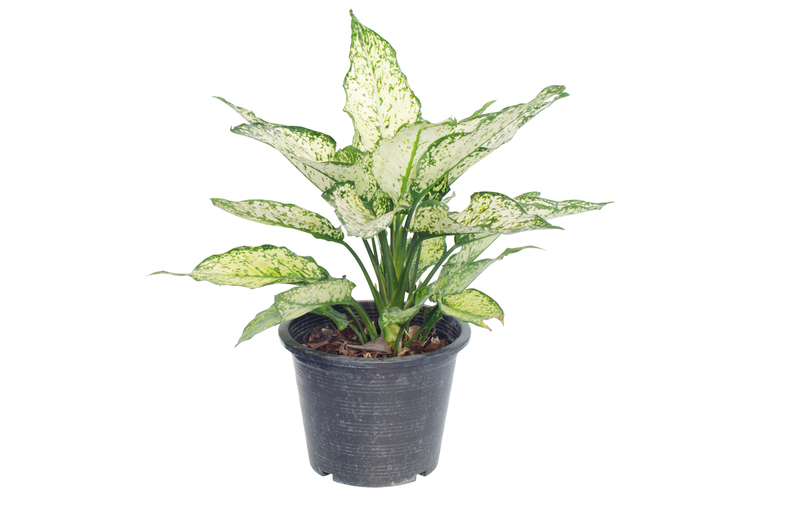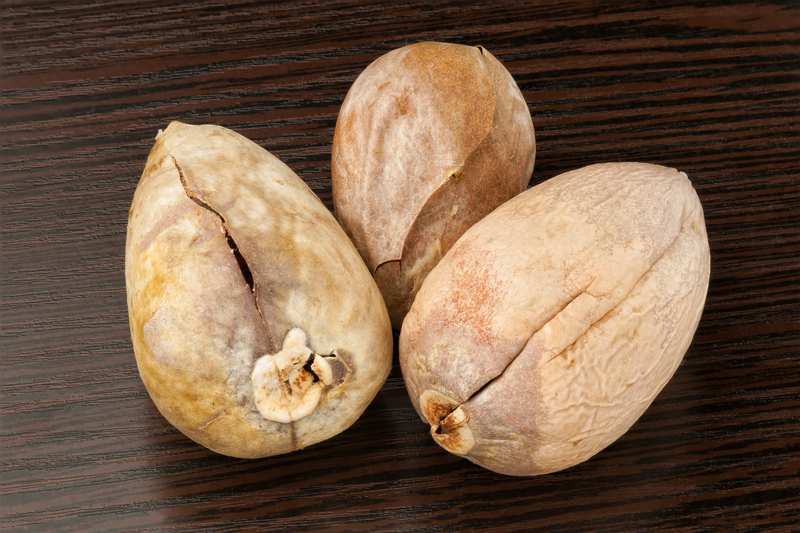How to Grow a Gorgeous Lawn--Insider Tips for First-Timers
Are you dreaming of a lush, green lawn that stands out in your neighborhood? If you're a first-time homeowner or a lawn care beginner, achieving that gorgeous grass may seem overwhelming. But with the right strategies and some insider secrets, you can cultivate a beautiful, thriving lawn that will be the envy of your block. This comprehensive guide covers everything you need to know about how to grow a gorgeous lawn--from soil basics to watering wisdom, and even troubleshooting common issues. Let's get started!
1. Understanding Your Lawn's Foundation: Soil Preparation
The secret to a vibrant lawn starts beneath your feet--with the soil. Good soil is the bedrock of a successful lawn. It's where grass gets nutrients, water, and root support. Here's how you can make sure your foundation is set for success:
Test Your Soil First
- Soil testing reveals the pH and nutrient levels of your yard. Without this, you're flying blind!
- Purchase a soil test kit from a local garden center or send a sample to a cooperative extension service.
- Most grasses prefer a pH between 6.0 and 7.0. If your soil is too acidic or alkaline, amend it accordingly with lime or sulfur.
Amend the Soil As Needed
- Incorporate organic matter--like compost or well-rotted manure--to boost fertility and drainage.
- Break up compacted soil with a core aerator, especially in high-traffic areas. This allows roots to penetrate deeper.

2. Choosing the Right Grass Type
Not all lawns are created equal. One of the most important lawn growing tips for beginners is selecting the right grass variety for your region, climate, and lifestyle.
Cool-Season vs Warm-Season Grasses
- Cool-season grasses (like Kentucky bluegrass, fescue, ryegrass) thrive in northern regions with cold winters and mild summers.
- Warm-season grasses (Bermuda, zoysia, St. Augustine) are ideal for southern zones with hot summers and mild winters.
If unsure, consult with your local cooperative extension, nursery, or landscape professionals. They can help you with a grass selection that fits your climate and sun-exposure.
3. Seeding, Sodding, or Sprigging: Establishing Your Lawn
Another essential step in growing a beautiful lawn is how you establish it. There are three primary methods:
- Seeding: Most affordable, best for cool season grasses.
- Sodding: Instant results, but higher cost.
- Sprigging: Planting small grass pieces; common for some warm-season varieties.
No matter the method, ensure your soil is loose, leveled, and free of debris.
Pro Tip: Time it Right!
- Sow cool-season grass seed in early fall for best results--a window when soil is still warm but air is cool.
- For warm-season grasses, late spring through early summer is ideal.
After planting, gently water the area to keep the top inch of soil moist until germination or rooting.
4. Watering Wisely
Proper watering is crucial to growing a thriving lawn, but many first-timers make mistakes here. Here's how to water smarter, not harder:
- Water deeply but infrequently. This trains roots to grow deeper, making grass more drought-resistant.
- Early morning is the best time to water--evaporation is low, disease risk minimized.
- Rule of thumb: Your lawn needs about 1 inch of water per week, from rain or irrigating.
- Use rain gauges or empty cans to measure how much water your sprinklers distribute.
- Avoid light, daily watering. It encourages shallow roots and weak grass.
5. Mowing Like a Pro
Mowing may seem straightforward, but how you do it impacts the health and beauty of your lawn.
- Never cut more than 1/3 the grass blade at one time--scalping stresses the plant.
- Keep mower blades sharp for a clean cut. Dull blades tear grass and increase disease risk.
- Adjust your mowing height seasonally. In summer, leave grass a little longer to shade roots and conserve moisture.
- Mix up your mowing direction each time to prevent rutting and promote upright growth.
Don't Forget to Mulch
- Grass clippings left on the lawn (mulching) return valuable nutrients and reduce the need for fertilizer.
6. Fertilizing for a Lush, Gorgeous Lawn
Feeding your lawn the right way is key to achieving that vibrant green color everyone admires.
Understand What Your Lawn Needs
- Base your fertilization schedule on your earlier soil test.
- Use a fertilizer formulated for your grass type (cool- or warm-season formula).
When to Fertilize
- Cool-season grasses: Fertilize primarily in fall and spring.
- Warm-season grasses: Fertilize in late spring through summer.
How to Apply Fertilizer
- Use a broadcast or drop spreader for even coverage.
- Follow the recommended rates; too much fertilizer burns the lawn.
- Water after fertilizing (unless the product says otherwise).
7. Controlling Weeds, Pests, and Diseases
Nothing ruins a gorgeous lawn faster than a weed invasion or pest infestation. Healthy, dense turf naturally crowdouts most troublemakers, but here are some tips:
- Apply pre-emergent herbicides in early spring to prevent crabgrass and other annual weeds.
- Spot-treat problem areas with post-emergent weed killers or hand-pull small outbreaks.
- Mow high and fertilize properly--thick lawns prevent weed seeds from reaching the soil.
- If you notice brown patches or stunted growth, look for signs of grubs or insect damage. Treat accordingly with eco-friendly insecticides if needed.
- Encourage air movement to reduce fungal disease risk--avoid overwatering and don't mow when wet.
8. Aeration and Overseeding
Periodically aerating your lawn is one of the best ways to promote deep-root growth and nutrient uptake. This involves punching holes in compacted soil to help water, oxygen, and fertilizer reach the roots.
- Aerate cool-season lawns in early fall and warm-season lawns in late spring.
- Overseed by spreading grass seed after aerating, which fills in thin spots and boosts your lawn's density and disease resistance.
9. Maintaining Your Lawn Through the Seasons
Consistency is key to growing and maintaining a stunning lawn. Here's what you should focus on, season by season:
- Spring: Clean up debris, dethatch, aerate, repair bare patches, and apply pre-emergent weed control.
- Summer: Mow high, water deeply, watch for drought stress, and monitor for pests.
- Fall: Fertilize cool-season grasses, overseed, aerate, and prepare for winter dormancy.
- Winter: Minimize foot traffic, avoid piling snow or heavy objects, and service your mower for spring.
10. Common Mistakes First-Timers Make (And How to Avoid Them)
- Overwatering: Leads to shallow roots, disease, and wasted water.
- Underwatering: Causes grass to dry out and thin.
- Mowing too short: Scalped lawns are weak and weed-prone.
- Over-fertilizing: Can burn grass and pollute waterways.
- Ignoring soil health: Everything in your lawn begins with the soil.
Always remember: Healthy soil + right grass + proper care = a gorgeous green lawn!
11. Eco-Friendly Lawn Care Tips
Today's homeowners crave beautiful yards without harming the planet. Here are some ways to have both:
- Incorporate clover or low-mow grass blends--they need less fertilizer and water.
- Mulch leaves with your mower instead of bagging--returns nutrients to the lawn.
- Collect rainwater for irrigation, or install drip hoses for efficiency.
- Use natural, organic fertilizers and spot-treat weeds instead of blanket-spraying chemicals.

12. Frequently Asked Questions (FAQs) for Lawn Care Beginners
How long does it take to establish a new lawn?
With seeding, expect 2-3 weeks for germination, but 1-2 years for a dense, mature look. Sodded lawns are "instant," but it still takes a few weeks for roots to knit in.
How often should I mow my lawn?
Typically, once per week during the growing season, but always base mowing on grass height, never the calendar. Avoid cutting more than one-third of the blade at once.
Should I bag or mulch grass clippings?
Mulching is the preferred, eco-friendly choice. Clippings return valuable nitrogen to your soil unless they are thick and wet (which may smother grass).
Why does my lawn have brown patches?
Brown spots can be caused by pet urine, drought, compacted soil, pests, or fungal diseases. Evaluate conditions and treat accordingly.
What's the best way to prevent lawn weeds?
A thick, healthy lawn is the best defense. Mow high, overseed annually, and use pre-emergent weed control in early spring.
13. Conclusion: Enjoy Your Gorgeous Lawn Year-Round!
Learning how to grow a gorgeous lawn takes patience, practice, and a little know-how. By understanding your soil, choosing the right grass, employing proper lawn care techniques, and staying vigilant for pests and weeds, you'll be well on your way to a vibrantly green, envy-inducing yard.
Whether you're starting from bare ground or looking to revive a struggling patch, these expert and insider lawn care tips for first-timers will put you on the path to success. Remember: the rewards of a healthy, beautiful lawn aren't just visual--the experience of tending it is part of the joy too. Happy growing!
- Test and prepare your soil
- Choose the right grass for your climate
- Water deeply, mow high, and fertilize strategically
- Avoid common mistakes and prioritize sustainability
If you've found these tips helpful, share your lawn's progress, questions, or photos with fellow beginners--and inspire the next generation of first-time lawn champions!